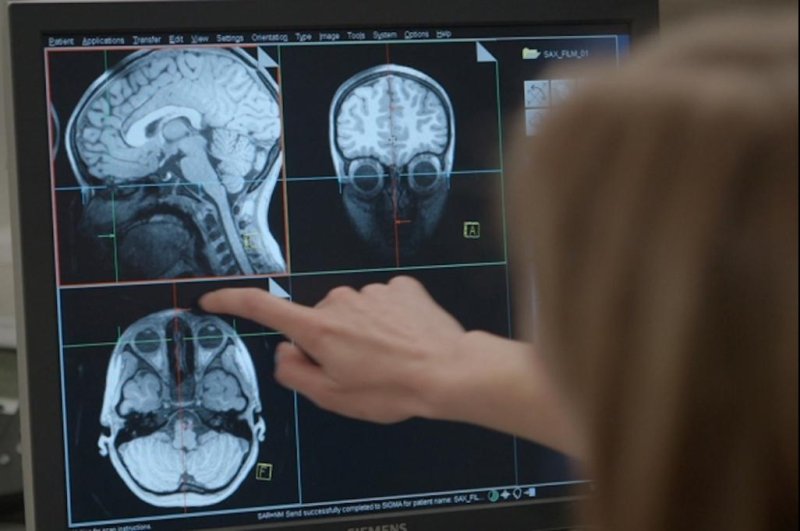Scientists monitored neural activity in the brains of children while they watched a short animated video inside an MRI machine. Photo by Trillium Studios/MIT News
March 12 (UPI) -- New research proves that by age three, the brain begins to develop neural networks that help children consider the mental state of other people.
The ability to consider another person's mental state and how that might affect their behavior is known as "theory of mind."
Scientists have traditionally used what's called a false-belief task to measure a child's ability to perform theory-of-mind reasoning. Children begin passing the false-belief test by age four. But new research using magnetic resonance imaging shows theory-of-mind networks begin to form and function in the brain at least a year earlier.
When people consider the mental state of others, a region called the temporo-parietal junction is activated. The TJP region is part of a theory-of-mind network connecting several parts of the prefrontal cortex.
To test the functionality of this network, scientists use the false-belief test, which measures whether a child is aware that others can hold beliefs that aren't true.
The most famous false-belief test is the Sally-Anne test, which asks children where Sally will look for her lost marble. The children are told Sally believes the marble is in her basket but that Anne hid it elsewhere when Sally wasn't paying attention. Children pass the test if they predict Sally will search first in her basket -- where she believes the marble is, not where it is.
Scientists have imaged the brains of children as young as five while they take a false-belief test, but researchers at MIT wanted to study the brains of even younger children.
To do so, they had to develop a method to keep young children sitting still and engaged while being inside an MRI machine. Instead of presenting children with a verbal test, researchers had children as young as three watch a short animated movie.
The movie, called Partly Cloudy, includes a cloud that produces baby animals and a stork that delivers the newborns to their parents. Peck, the stork, gets angry at Gus, the cloud, for producing hard-to-carry animals like alligators and porcupines, instead of puppies and kittens. The stock is even attacked by some of the baby animals while trying to do his job.
"It has events that make you think about the characters' mental states and events that make you think about their bodily states," Hilary Richardson, an MIT graduate student, said in a news release.
Using the MRI machine, scientists measured neural activity in children ages 3 to 12 as they watched the movie. The imaging focuses on two regions, the theory-of-mind network and the pain matrix, a region linked with the process of considering another person's physical experience.
Researchers also imaged the brains of adults while watching the movie, which helped Richardson and her colleagues identify the scenes that trigger theory-of-mind processing.
The results, published this week in the journal Nature Communications, showed that the same scenes that trigger theory-of-mind processing in adults spark TJP activity in the brains of children as young as three.
"We see early signatures of this theory-of-mind network being wired up, so the theory-of-mind brain regions which we studied in adults are already really highly correlated with one another in three-year-olds," Richardson said.
The findings support the theory that the neural networks that support theory-of-mind reasoning begin developing well before children can pass false-belief tests.
"Scientists have focused really intensely on the changes in children's theory of mind that happen around age four, when children get a better understanding of how people can have wrong or biased or misinformed beliefs," said Rebecca Saxe, an MIT professor of brain and cognitive sciences. "But really important changes in how we think about other minds happen long before, and long after, this famous landmark."















